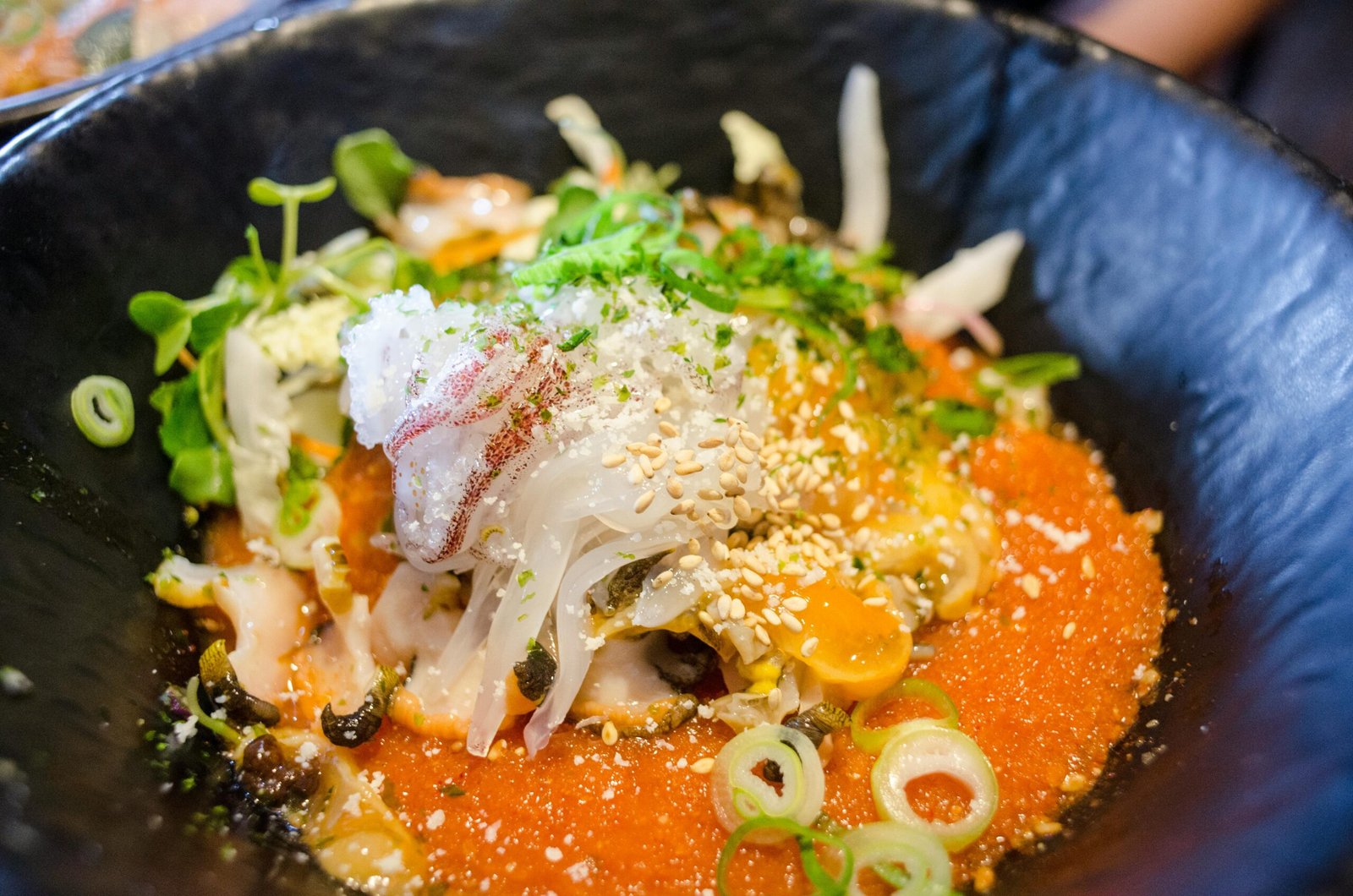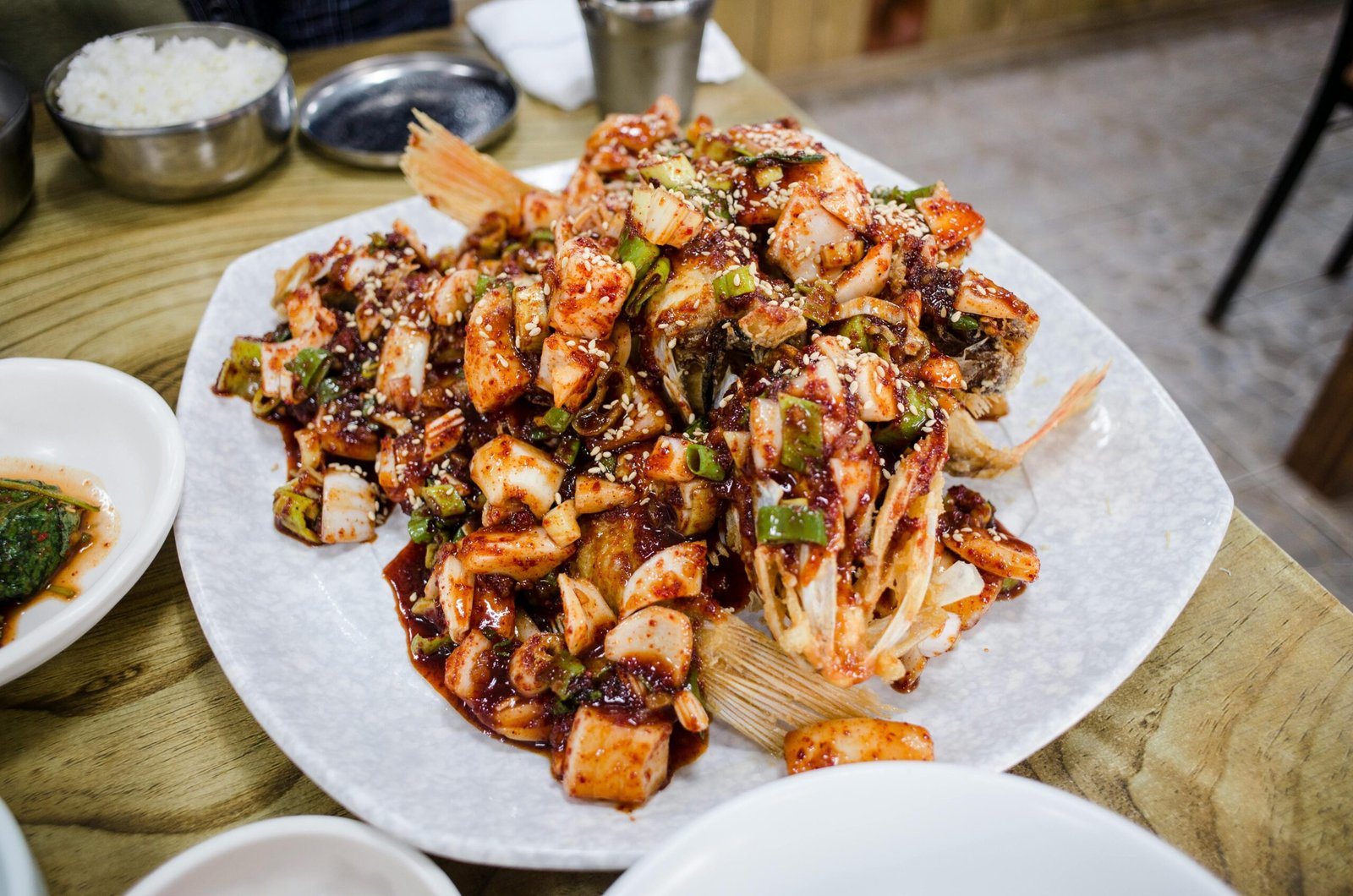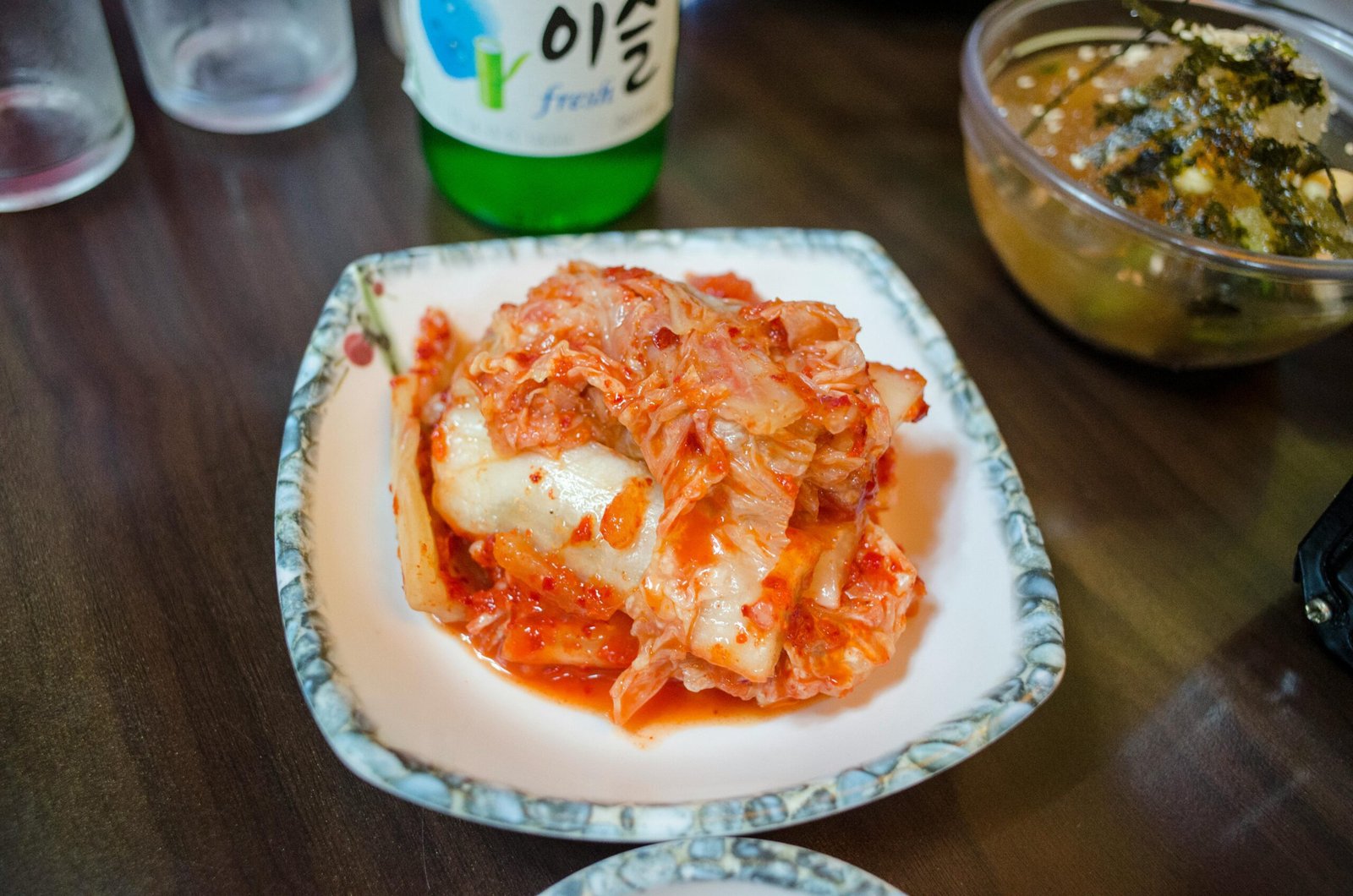In the world of Korean cuisine, you embark on a thrilling adventure where textures play a pivotal role in creating an unforgettable dining experience. By combining crunchy vegetables with tender meats and pairing chewy rice cakes with crispy pancakes, Korean-inspired dishes invite you to explore a vibrant array of sensations. Whether you’re stirring up a sizzling bibimbap or savouring a delightful kimchi pancake, the interplay of textures transforms each bite into a mesmerizing journey. Discover the art of balancing soft, crispy, chewy, and tender elements in your Korean culinary creations to elevate your meals to new, exciting heights.
Have you ever found yourself enchanted by the vibrant tastes and aesthetic plates of Korean cuisine? If you’re nodding your head in agreement, you’re not alone! Korean food stands out not just for its deep flavors but also for its harmonious balance of textures. But how do you experiment with textures in Korean-inspired dishes?
Trying your hand at Korean-inspired meals can be a delightful culinary adventure, particularly when you start exploring the interplay of textures. Let’s dive into the world of Korean cuisine and discover how to masterfully blend a variety of textures into your dishes, allowing each bite to be an experience in itself.
Understanding Korean Cuisine
Korean cuisine is a rich tapestry of flavors, colors, and textures that play together in perfect harmony. The cuisine’s focus on fermented ingredients, fresh vegetables, and a mix of cooking techniques sets it apart from its global counterparts.
Core Components
The essence of Korean cooking revolves around key components:
- Rice: The staple carbohydrate, often served as steamed white rice or as a base for various dishes.
- Fermented Ingredients: Think kimchi, doenjang (fermented soybean paste), and gochujang (fermented chili paste). Each brings a unique texture and flavor profile.
- Fresh Vegetables: Crucial for both their crunch and nutritional value.
- Meats and Seafood: These proteins are frequently marinated to enhance flavors and textures.
- Banchan: These are small side dishes that accompany the main meal, offering a range of textures from crunchy to silky.
The Importance of Texture in Korean Dishes
Texture plays a pivotal role in the overall dining experience. It’s not just about taste; it’s also about how the food feels in your mouth. In Korean cuisine, this variety keeps the meal exciting from start to finish.
Common Textures in Korean Cooking
Let’s look at some commonly embraced textures in Korean cuisine:
| Texture | Example Dishes |
|---|---|
| Crunchy | Kimchi, pickled radishes |
| Chewy | Tteokbokki (rice cakes) |
| Tender | Bulgogi, Galbi (marinated meats) |
| Silky | Sundubu-jjigae (soft tofu stew) |
| Crispy | Haemul-pajeon (seafood pancakes) |
| Smooth | Juk (rice porridge) |

Exploring Different Textures
When planning to experiment with textures in your Korean-inspired dishes, consider how you can incorporate various textures seamlessly.
Crunchiness
Crunchy textures can add a refreshing element to your dish, breaking the monotony and providing a delightful contrast.
- Kimchi: This fermented cabbage is a staple in Korean cuisine and packs a serious crunch thanks to its fermentation process.
- Pickled Radishes: Commonly served with Korean BBQ, these add a crisp, tangy bite.
- Nuts and Seeds: Garnishing dishes with toasted sesame seeds or pine nuts can add an extra layer of crunch.
Chewiness
Chewy textures engage your jaw a little more, providing a satisfying experience that’s different from other textures.
- Tteokbokki: These chewy rice cakes in a spicy sauce offer a unique mouthfeel that’s distinct from other components of the meal.
- Chapchae: This stir-fried glass noodle dish has a chewy, springy texture that’s both filling and fun to eat.
Tenderness
Tender textures, especially in meats, make a dish comforting and hearty.
- Bulgogi: Thinly sliced, marinated beef that’s grilled or stir-fried to perfection. Its tender texture melts in the mouth.
- Galbi: Marinated beef short ribs that are grilled, giving you a tender and juicy bite.
Silkiness
Silky textures often make dishes feel luxurious and smooth.
- Sundubu-jjigae: A spicy soft tofu stew where the tofu is silky and smooth, providing a beautiful contrast to the spicy broth.
- Seolleongtang: A milky beef bone soup that has a rich, silky texture.
Crispiness
Crispy elements can add an exciting contrast, making other textures stand out even more.
- Haemul-Pajeon: Seafood pancakes that are fried until crispy on the outside yet soft on the inside.
- Kimchi Pancakes: These pancakes combine the spicy tang of kimchi with a crispy fried edge.
Smoothness
Smooth textures are often associated with comfort foods and can make a dish feel homely and easy to eat.
- Juk: This is a type of rice porridge that is smooth and easy to digest, often served as a comfort or health food.
- Patbingsu: A popular Korean dessert made with shaved ice and sweet toppings; it has an incredibly smooth texture.
Combining Textures in a Single Meal
One of Korean cuisine’s most exceptional qualities is how multiple textures are combined within a single meal.
Bibimbap
One prime example is Bibimbap. This dish is a beautiful amalgamation of textures in one bowl.
- Rice: Smooth and slightly sticky.
- Vegetables: Generally include both crunchy (carrots, cucumbers) and cooked tender vegetables (spinach, mushrooms).
- Protein: Often includes a fried egg (silky yolk) and marinated beef (tender).
- Gochujang: Adds both a smooth texture and a rich, spicy flavor.
Korean BBQ
When you go for Korean BBQ, a world of textures awaits you.
- Meats: You can opt for various cuts, offering a range from tender (marinated beef) to crispy edges (pork belly).
- Banchan: Side dishes provide everything from crunchy (fermented vegetables) to silky (tofu), enhancing the main meal.

Recipes to Experiment With
Now, let’s get hands-on. Here are some recipes that allow you to play with textures while making Korean-inspired dishes.
Recipe 1: Tteokbokki (Spicy Rice Cakes)
Ingredients:
- 1 pack of Korean rice cakes
- 2 cups of water
- 3 tablespoons gochujang (Korean red chili paste)
- 1 tablespoon sugar
- 2 cloves garlic, minced
- 1/2 cup fish cakes, sliced
- 1 boiled egg, halved
- 2 green onions, chopped
Instructions:
- Prepare Rice Cakes: If the rice cakes are hard, soak them in warm water for about 10 minutes.
- Boil Water: In a large pan, bring water to a boil.
- Add Ingredients: Add gochujang, sugar, and minced garlic to the boiling water. Stir until well mixed.
- Cook Rice Cakes: Add the soaked rice cakes and cook until they are soft and chewy.
- Add Fish Cakes: Stir in the fish cakes and cook for an additional 2-3 minutes.
- Serve: Garnish with boiled egg halves and chopped green onions.
Recipe 2: Haemul-Pajeon (Seafood Pancakes)
Ingredients:
- 1 cup all-purpose flour
- 1/2 cup rice flour
- 1 1/2 cups water
- 1 egg
- 1/2 teaspoon salt
- 1 cup mixed seafood (shrimp, squid, etc.)
- 1 bunch green onions, chopped
- Oil for frying
Instructions:
- Mix Batter: In a bowl, combine all-purpose flour, rice flour, water, egg, and salt. Mix until you have a smooth batter.
- Prepare Seafood: Clean and chop the seafood into bite-sized pieces.
- Combine: Add seafood and green onions into the batter, mixing until well incorporated.
- Heat Pan: Heat a generous amount of oil in a frying pan over medium-high heat.
- Cook: Pour half of the batter into the pan, spreading it evenly. Cook until the bottom is crispy and golden brown, then flip to cook the other side.
- Serve: Once both sides are crispy, remove and cut into manageable pieces. Serve hot.
Recipe 3: Bibimbap
Ingredients:
- 2 cups cooked rice
- 1 carrot, julienned
- 1 cucumber, julienned
- 1 cup spinach, blanched
- 1/2 cup shiitake mushrooms, sliced
- 1 zucchini, julienned
- 1/2 cup bean sprouts
- 1 fried egg
- 200 grams marinated beef (bulgogi)
- 2 tablespoons gochujang
- Sesame oil, for drizzling
- Sesame seeds, for garnish
Instructions:
- Prepare Vegetables: Sauté carrots, cucumbers, spinach, mushrooms, zucchini, and bean sprouts separately until tender but still crisp.
- Cook Beef: Grill or stir-fry marinated beef until cooked.
- Assemble: In a bowl, place a serving of cooked rice. Arrange the prepared vegetables and beef on top of the rice.
- Add Egg: Place a fried egg on top of the arrangement.
- Serve: Add a spoonful of gochujang in the center, drizzle with sesame oil, and sprinkle with sesame seeds. Mix everything together before eating.
Tips to Experiment Further
If you’re feeling adventurous, here are some tips to take your experimentation with textures in Korean-inspired dishes even further.
Play with Marination
Marinating your proteins can significantly affect their texture. Consider these options:
- Tenderizing Meats: Use a mixture of soy sauce, sugar, garlic, and grated Asian pear.
- Adding Crispiness: Marinate in a slightly acidic mixture and coat in starch before frying.
Explore Fermentation
Fermented foods have a unique texture and flavor. You can try making your own kimchi or other pickled vegetables.
Use Different Cooking Techniques
Don’t hesitate to mix and match various cooking techniques to create exciting textures. A combination of frying, steaming, and grilling can add new dimensions to your dish.
- Fry: For crispiness.
- Stir-fry or Grill: For tender textures with a slight char.
- Steam: For soft and smooth components.
Experiment with Ingredients
Given the wide range of ingredients in Korean cuisine, you have ample opportunities to create distinctive textures.
- Swap Meats: Use different cuts to experience a variety of textures.
- Try Different Tofus: Silken, firm, or dried tofu each offer unique mouthfeels.

Conclusion
Korean cuisine’s magical allure lies in its harmonious blend of flavors and textures. Through thoughtful experimentation, you can recreate this balance in your own kitchen, offering a delightful culinary experience to yourself and others.
So, next time you’re in the mood for some Korean-inspired cooking, let your creativity take the reins. Experiment with different textures and discover new, exciting ways to enjoy your meals. Happy cooking and 맛있게 드세요 (enjoy your meal)!
